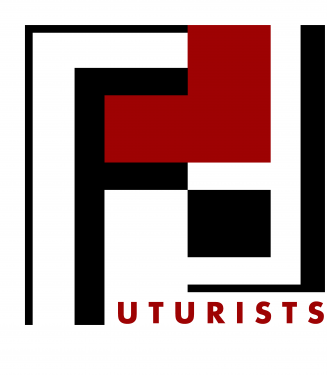.
ZUAM is an immersive location based opera-ritual for four opera singers, Deaf dancer, electronics and video. It tells the story of an ancient-futurist tribe living in a world suspended between prehistoric times and distant future. In a 2 hour experience it explores the UrSprache, the proto-language researched by the Futurist poets, Antonin Artaud and Peter Brook as well as the sign language.
ZUAM is an attempt to reconnect with our inner self. It’s a meditative experience for the battered soul of a 21st century person, constantly overwhelmed and slightly lost in a fast changing world. It aims to give the audience a metaphysical and cathartic experience, speaking directly to the subconscious, while getting away from the outside reality.
The music is inspired by Bielski’s previous discoveries in the extended non-language-based vocal field, as well as the traditional music of Inuit, Tibetan, Sioux, Zulu, and Balinese people, with the addition of Celtic war instruments, Tibetan and Bhutanese ritual horns – all heavily processed electronically.
Technology plays an important part in the performance. The audience is scattered around an open space, surrounded by a circle of light tubes with two 4 meter high monoliths between them. One made of loudspeakers, the other out of LED screens projecting rhythmical shapes, noise and tribal patterns. A large controlled cloud of smoke appears in the centre of the area with faces of the ancestors projected on it.
.
.
ZUAM small prototype version was initially developed as part of the O. Festival for Opera. Music. Theatre. (O. Lab) in 2022:
.
24.05 // premiere of Zuam at O. Festival for Opera Music Theatre // ticket sales online soon
25.05 // Zuam at O. Festival for Opera Music Theatre // ticket sales online soon
07.06 // Zuam at Oerol, Terschelling // ticket sales online soon
08.06 // Zuam at Oerol, Terschelling // ticket sales online soon
09.06 // Zuam at Oerol, Terschelling // ticket sales online soon
10.06 // Zuam at Oerol, Terschelling // ticket sales online soon
11.06 // Zuam at Oerol, Terschelling // ticket sales online soon
12.06 // Zuam at Oerol, Terschelling // ticket sales online soon
13.06 // Zuam at Oerol, Terschelling // ticket sales online soon
14.06 // Zuam at Oerol, Terschelling // ticket sales online soon
15.06 // Zuam at Oerol, Terschelling // ticket sales online soon
16.06 // Zuam at Oerol, Terschelling // ticket sales online soon
05.09 // Zuam at Gaudeamus festival, Utrecht // ticket sales online soon
.
Partners:
Oerol, O. Festival for Opera. Music. Theatre, Gaudeamus, Plein Theater, Amsterdamse Bostheater, more t.b.a.
.
Team:
Artistic direction – Jerzy Bielski and Thomas Brand
Concept, composition, stage direction – Jerzy Bielski
Dramaturgy, visuals, light design – Thomas Brand
Dramaturgy, choreography – Sandra Abouav
Audio programming, live electronics – Tatiana Rosa
Body painter, performer – Julia Kiryanova
Deaf dancer – Pawel Moleda
Voice (soprano), movement – Laura Bohn
Voice (soprano), movement – Julia Mintzer
Voice (baritone), movement – Arnout Lems
Coaching and final stage directing – Frances Sanders
Photos – Thomas Brand
Supported by:
Fonds Podiumkunsten, Amsterdams Fonds voor de Kunst, het Cultuurfonds, BNG Cultuurfonds
……………..
.
.
ZUAM is at times a rebellious stance against a found reality and at times a metaphysical ceremony, evoking the mystery of existence, spoken through our distant ancestors’ as well as our grand-, grand-, grand-, grandchildren’s tongues, bridging a gap between the past and the future in the most explicit way one can imagine. The piece appears as a “beyond-reason” and “beyond-verbal” pagan cyberpunk story full of ritual mysticism, a hallucinogenic trip and cleansing Catharsis, all in one. It wants to introduce you to the unseen, the unspoken, the poetic, the mysterious past and the future world of (our own) imagination.
.
Technology (VR, XR, holograms, 3D animations, AI, coding) is part of the tribe’s natural world, like a nature which surrounds them. The piece feels like a series of highly interdisciplinary rituals, intertwined with different recitatives, dialogues and solos, conducted by the carefully arranged movement of the performers in space, placements and symbols deriving from the audio and visual “monoliths” in space, music, video (projected on the scenography as well as walls and performers bodies), and, last but not least, ancient-futuristic sound sculptures.
In terms of sound, it’s a closely fitting, constantly evolving, swelling construct, made of several electronic and acoustic layers, often resembling a strange hallucinogenic stroytelling, where the listener does not now any more what’s a hoax and what’s real, what’s being processed/induced upon them and what’s a real acoustic sound. Where lies a thin line between so called rational and (perhaps) objective, and where one’s mind starts playing tricks, involving one’s eyes and ears. In this vocal oriented piece the emphasis is put on operatic singing blended with breathing, growling, hissing, screaming, smocking, whispering, as smoothly as possible. This is being contrasted with the use of the proto-language in arias and recitatives, resulting in a highly distinctive sound world.
.
….





